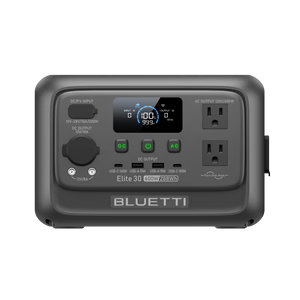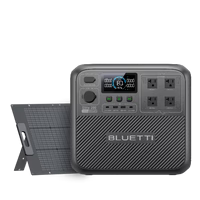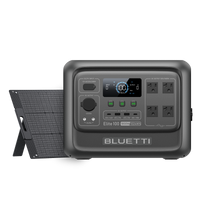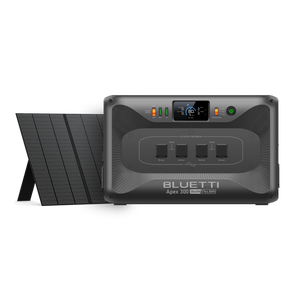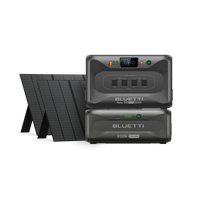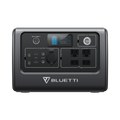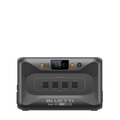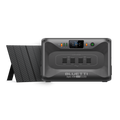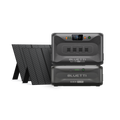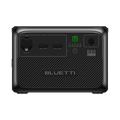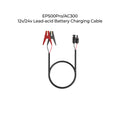Electricity is a commodity a lot of folks take for granted. The resource is so omnipresent to the average household that people might get caught off guard when the unfortunate brownout or blackout takes place. With summer on the horizon and the average temperatures heating up, you should be prepared for possible power outages. Here’s why…
As the weather gets hotter, more homes in our neighborhoods resort to air conditioners and fans. Appliances like refrigerators and freezers also work harder to counter the heat, all leading to more stress on the energy grid. From time to time, it’s more than our power systems can handle.
Understanding Brownouts
What is a brownout?
In a nutshell, one of these outages is more severe than the other: Brownouts occur when an anomaly or overuse temporarily reduces the electrical current from the grid. Brownouts usually hit smaller and more controlled areas, and are often unexpected and temporary.
What Are the Causes of Brownouts?
Brownouts can be caused by various factors that put strain on the electrical grid and disrupt the distribution of power. Some common causes include:
- Overloading of the electrical grid: When the demand for electricity exceeds the supply capacity of the grid, voltage levels may decrease, resulting in brownouts. This often occurs during periods of high energy consumption, such as hot summer days when air conditioning units are running at full capacity.
- Faulty electrical equipment and wiring: Malfunctioning electrical equipment, damaged wiring, or loose connections can lead to voltage fluctuations and brownouts. These issues can occur within households, commercial buildings, or at various points in the electrical distribution network.
- Severe weather conditions and natural disasters: Storms, hurricanes, earthquakes, or other natural disasters can damage power lines, transformers, and other electrical infrastructure. These disruptions can cause voltage drops and contribute to brownouts in affected areas.
What’s the difference between brownout and blackout?
In a nutshell, one of these outages is more severe than the other: Brownouts occur when an anomaly or overuse temporarily reduces the electrical current from the grid. Brownouts usually hit smaller and more controlled areas, and are often unexpected and temporary.
Blackouts completely cut off the electricity in larger areas, usually for a much longer longer duration. These can also be planned outages, as decided by your energy company.

Coping with Brownouts: Tips and Solutions
Do brownouts damage electronics?
Brownouts can be problematic because sudden electric current changes can pave the way for abrupt voltage spikes as well. If your electronics do not have proper surge protection or voltage regulation built in, brownouts could damage devices including laptops, televisions, monitors and more sensitive electronics. You can and should plug your devices into a surge protector or an automatic voltage regulator (AVR) to reduce the chances of damaging your electronics. While that’s just smart device management, neither solution can provide backup power during a brownout or blackout event.
While it’s not a big deal if a light is out during a power outage, as more of us work from home, it’s more important than ever to ensure uninterruptable power. For business owners and executives losing power, Wi-Fi and Zoom lights during a key client presentation can be disastrous.
Only a true backup power source can fully protect you from being without power when it’s most important.
Install a backup power solution
Many of us own a small power station that helps as a temporary backup power solution to charge a smartphone and other gadgets that rely on USB power. But that’s about all it can do.
Larger solutions such as gas generators can power up higher wattage equipment or possibly your entire house. While gas generators can fit the bill as a whole-home backup power solution, they do have their downsides: Eventually your generator will run out of gas, plus they’re noisy, and can’t be used indoors. Generators also require some regular maintenance for peak efficiency and repairing and replacing parts can add to the costs.
What if there was a solution that falls somewhere in between these two options? The good news: There is!
What can I use instead of a gas generator?
The best alternatives to gas generators are portable power stations like the BLUETTI AC200P. BLUETTI battery products are basically super-sized power banks with a wide array of outlets mirroring and possibly exceeding the capacity and type of connections a generator can provide. For instance, investing in the BLUETTI AC500 and extra B300S battery backup combo should offer a lot more juice and versatility than a mere gas generator.
If you want to know more about how to cope with summer blackout, this article "7 Tips to Prepare for a Summer Power Outage" will help you
Portable Power Station for Brownout
How do emergency power systems work?
Rather than relying on gasoline for fuel, emergency power systems use large rechargeable batteries as power sources. Combined with special circuits and chips, these power sources can efficiently transfer electricity to other devices plugged in to them.
Most battery-powered systems use either lead acid or lithium-ion batteries. BLUETTI products use a special type of lithium-ion battery called LiFePO4 which boasts higher energy density and can withstand far more charge cycles. Plus, unlike lead acid batteries, you do not need to fully discharge and recharge them making BLUETTI products virtually maintenance-free.
Best of all most of BLUETTI’s best portable power stations are easily rechargeable, using a wall plug (when the power is on), a car-power adapter, or even solar panels. BLUETTI power solutions even let you combine charging methods to lessen the charging times. Having this level of flexibility really makes these solutions vastly superior to gas generators.
What can a portable power station do at home?
The things a portable power station can do for you at home can vary depending on the exact model you get. Fortunately, BLUETTI offers a wide range of portable power stations to suit various budgets and needs.
A product like BLUETTI EB3A still offers a couple of AC outlets and USB ports as well as some DC outlets and even a wireless charging pad. If you consider larger products like the BLUETTI AC200P and its 2,000-watt power spec, you can power small refrigerators and other appliances in addition to your portable gadgets and electric fans.
Because BLUETTI products support passthrough charging and use pure sinewave inverters for power delivery, these solutions are the perfect counters to sudden brownouts and blackouts.
These types of premium power stations can provide clean, continuous energy as if it was coming directly from the grid. Quality portable power stations can handle sudden voltage changes while keeping the power needs of the connected devices fulfilled thanks to the built-in LiFePO4 battery.

What else can I use a portable power device for?
The great thing about having a reliable backup power device is that it doesn’t have to wait in the basement until the next outage. The most reliable portable power stations can be brought anywhere, making them incredibly versatile.
Use a BLUETTI EB70S at the sports field for practice, to keep music on, and as a place to recharge phones, or to plug in the portable cooler or ice maker. Or size up to something like BLUETTI AC200MAX and a PV200 solar generator kit, which can power devices and appliances at the cabin, cottage or aboard the RV.
Don’t wait for the next blackout; invest in clean, truly portable backup power. Your gadgets will thank you.
